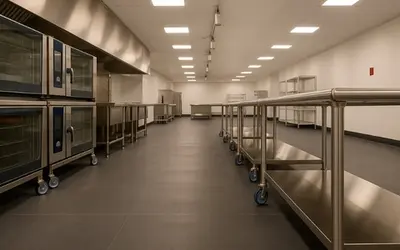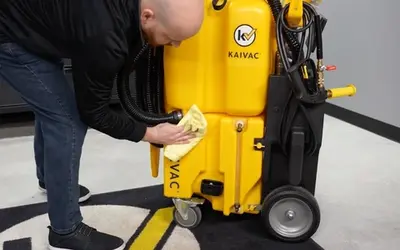Guide to Cleaning Correctional Facilities

Keeping a correctional facility clean is about much more than aesthetics. Of course, good maintenance practices help prevent the spread of infections and disease in any crowded, congregant setting. But proper cleaning in a correctional facility does even more. It actually helps regulate inmate behavior.
Poor living conditions “essentially guarantees bad inmate behavior” according to the U.S. Department of Justice in this document. “The desire to live in a clean and comfortable environment is a basic human safety need.” The document also clearly states that “a clean jail is one of the hallmarks of a well-managed facility.”
Poor conditions, like those continuously found in New York City’s Rikers Island, result in violations of standards, creating inhumane and unsafe living conditions.
Whether the correctional facility is maintained by outside contractors, or if cleaning is part of a rehabilitative training program like this one in DuPage County jail, using the right tools makes a difference. Here’s why using Kaivac tools are the best way to clean and maintain correctional facilities.
Cleaning Cells
Inmates spend a good chunk of their time in their cells. This space includes a bed and a combination stainless steel toilet/sink unit. Minimum security prisons with dormitory-style housing, might have a communal bathrooms outside the cell. There may also be a desk, some storage, and perhaps even a television.
Keeping these cells clean is important for inmate dignity and health. Using mops and rags, however, creates other issues. Mop heads and rags are combustible and can be used to set fires. Also, mops heads often smell sour, forcing inmates to get creative.
A No-Touch Cleaning® system from Kaivac is a better choice for cell cleaning. After spraying surfaces with cleaning chemicals, the machine’s high-pressure freshwater rinse dislodges dirt and germs from commodes, corners, and floors. A powerful vacuum sucks the mess up, leaving surfaces clean and dry.
Large Floors and Long Hallways
Larger spaces, like long hallways and wide-area, hard surface floors need a different cleaning tool. Mops and push brooms are just too slow to effectively tackle these bigger floors. These long-handled tools can also be fashioned into a shank, presenting a danger to inmates and employees.
The AutoVac Stretch™ from Kaivac removes the risk while quickly cleaning large expanses of floor. Users walk behind the machine while it dispenses cleaning chemicals, agitates the solution, and sucks up the mess. The floor is left clean, dry, and safe to walk on.
The AutoVac Stretch works quickly, cleaning more than 25,000 square feet an hour without needing a refill. It is easy to learn and maintain. The machine also costs much less than an autoscrubber.
Clean, Grease-Free Kitchens
Cleaning any industrial kitchen is a challenge. But prisons, filled with vulnerable populations, present a distinct set of concerns. Foodborne illnesses are, perhaps, among the most immediate and universal risks for incarcerated people—research findings indicated they were six times more likely to contract them according to this article.
Prison kitchens, like all kitchens, need to be clean to avoid that spread of foodborne illness. The same goes for fallen food that attracts insects and rodents and built-up grease that creates sticky surfaces and floors.
Choosing the right tool, like the UniVac® from Kaivac, makes cleaning a correctional facility kitchen easier and more complete. Unlike mops and brushes, the UniVac coupled with a powerful degreaser like KaiPow™, breaks up grease and dirt. The machine’s robust vacuum sucks the mess away. The long vacuum wand even reaches under counters and equipment to remove fallen food other tools miss.
Cleaning a correctional facility helps preserve the dignity and health of inmates, employees, and visitors. Click here for more tips on how to keep these areas clean and safe.
Related Posts

Floor Cleanliness and Food Safety Scores
Poorly maintained floors are unsafe and unsanitary. They hold standing water, harbor pests, and cause slip, trip, and fall accidents. Here’s how to improve floor care and your food safety scores.
Read more
Preventive Maintenance for Your No-Touch Cleaning® System
Your Kaivac No-Touch Cleaning system makes restroom maintenance fast and easy. Keeping your No-Touch Cleaning system in good working order is also fast and easy. Kaivac makes performing preventative maintenance and troubleshooting potential issues simple. No special equipment or technical expertise required.
Read more
Beyond the Restroom: Kaivac for Fast, Easy, and Complete Kitchen Floor Care
You already know and trust Kaivac for restroom care. Our No-Touch Cleaning® systems make the unpleasant task of servicing restrooms fast, easy and complete. But did you know Kaivac has cleaning machines for every kind of floor?
Read more